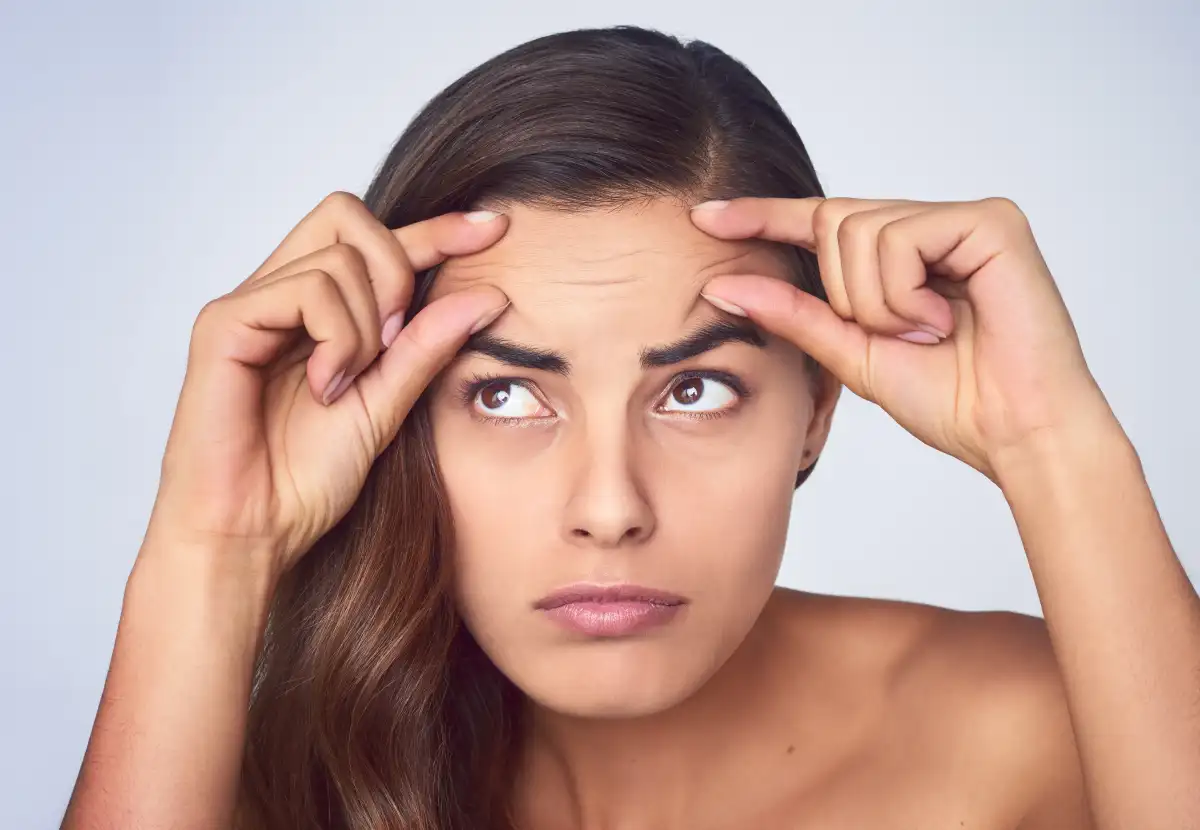A high forehead in women is not necessarily a flaw or unattractive. In fact, during the Middle Ages, it was considered an ideal of beauty for women, as seen in many Renaissance paintings.
However, if the hairline keeps receding - and bald patches appear at the temples - the perceived attractiveness may diminish, often leading to emotional discomfort.

Anatomy and Characteristics of a High Forehead
A high forehead is not a medical condition but a natural anatomical feature. It typically occupies about one-third of the face, though in some women it may appear larger due to fine hair or hereditary factors. Often, it’s simply genetic and doesn’t require treatment unless accompanied by hair loss.
However, when the hairline recedes, the temples thin out, and bald patches form, the issue may be due to external factors or underlying health problems - not just facial proportions.
What Causes a High Forehead in Women?
Tightly pulled-back hairstyles like buns or ponytails have been back in fashion for years. But not everything that looks good is healthy for your hair.
These hairstyles can lead to traction alopecia - hair loss caused by constant pulling. Mechanical tension damages the hair at the roots, especially around the hairline and sides, leading to breakage or hair fall.
This condition is common in people who wear tight braids, buns, or ponytails, and also with backcombed styles. Improper styling methods, such as overly tight and frequent use of curlers, can also contribute.
The risk increases when combined with chemical treatments like perms, straighteners, or aggressive dyes.
How to Hide a High Forehead

There are many visual techniques to hide a high forehead and make facial features appear more balanced. The most effective method is a well-chosen haircut.
Straight or side-swept bangs shorten the appearance of the forehead and create a softer transition from the hairline to the face. Hairstyles with volume at the temples or layers around the face also help draw attention away from the forehead.
Avoid tight, slicked-back styles like flat ponytails or buns without volume - these emphasize the forehead and make thinning areas more noticeable.
For evening looks, soft waves and loose strands framing the face can create a gentler, more elegant style.
Traction Alopecia Symptoms – First Signs
Hair doesn't fall out overnight. As with androgenetic alopecia, traction alopecia progresses gradually. The first sign is often frizz - hair breaks off, shorter hairs stick out, or fall out when removing tight hairstyles.
If the pulling continues, hair roots may become damaged. This shortens the growth phase, resulting in thinner regrowth. Eventually, the root may stop producing hair altogether.
Preventing Traction Alopecia
Prevention is the best way to maintain healthy hair and avoid traction alopecia. Here are some key tips:
- Avoid excessive tension in hairstyles. Don’t wear tight ponytails, buns, or braids for long periods.
- Change your part and ponytail position frequently to reduce stress on specific scalp areas.
- Use soft, metal-free hair ties - fabric or silicone ties are best.
- Don’t sleep with your hair tied up. Leave it loose or in a soft braid at night.
- Limit heat styling: curling irons, flat irons, and blow-dryers add extra stress.
- Avoid chemical treatments if you notice signs of scalp irritation or hair thinning.
What to Do if You Have Traction Alopecia
If you’ve noticed early traction alopecia symptoms, there are a few first-aid measures you can take.
Give your hair a break - literally. Let it stay loose or gently tied back with minimal pressure. Avoid daily styling with heat or rollers.
Support your hair health with essential nutrients like biotin, magnesium, and calcium.
It usually takes around six months for hair follicles to recover. During this time, pigmentation or styling techniques can help conceal thinning areas.
When a High Forehead Isn’t Alopecia
It’s important to distinguish between a naturally high forehead and early signs of alopecia. Some women naturally have a higher hairline, and that’s completely normal.
However, if the hairline is receding, there are gaps between the hairs, or symmetrical thinning at the temples, that may indicate a problem. These symptoms are often linked to traction alopecia, androgenetic alopecia, or scalp conditions like seborrhea or psoriasis.
If you're unsure, it's best to consult a dermatologist or trichologist.
What If Hair Doesn't Grow Back?
Consult a professional. A doctor will assess your haircare habits, scalp condition, and hair follicles. The treatment's success depends on how much damage has already occurred.
Possible treatment options include:- Topical products to stimulate hair growth (e.g., minoxidil).
- Therapies such as laser treatment, mesotherapy, or PRP (platelet-rich plasma).
- Supplements with biotin, zinc, and B-complex vitamins.
- Hair transplant surgery in severe cases where regrowth is unlikely.


